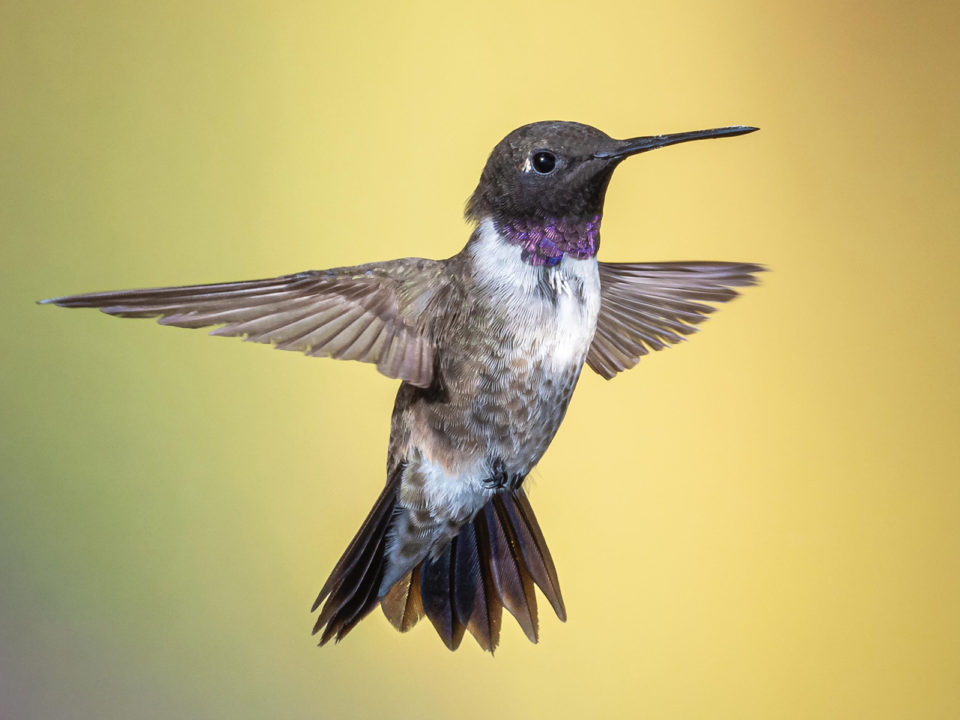The Local newsletter is your free, daily guide to life in Colorado. For locals, by locals. Sign up today!
Q: My surprising quarantine revelation: I really enjoy backyard birding. What should I keep an eye out for this time of year, and how can I attract them?
A: Rufous hummingbirds are especially entertaining to watch during the late summer and early fall, when they migrate from the mountains through urban areas. The males are red with pink throats that become iridescent in the sun, and they are cranky little guys—aggressive eaters, they terrorize locals, like meeker black-chinned hummingbirds, at feeding stations. Larger birds begin their fall migrations around this time, too, so you might see some Swainson’s hawks as they move south. They’re the size of frequently seen red-tailed hawks but usually are black and white underneath with a chestnut bib. Red-tinted house finches, scholarly black-capped chickadees, and vibrant yellow warblers are all flying around Denver now. I’d recommend visiting a shop like Front Range Birding Company or Wild Birds Unlimited, whose experts can help you pick out a feeder and seed that will appeal to whatever species you’d like to see. Be careful to take the feeders inside in the evening if you live near the foothills, though. There’s nothing worse than fending off a bear while you’re trying to enjoy the sunset. —Peter Burke, board member for Colorado Field Ornithologists, a nonprofit birding organization
Q: I never want my adventures to land me in the hospital—especially this year, when a COVID-19 patient might need that bed. Should I hang up my hiking boots?
A: We still encourage people to enjoy mountains and parks—do what you need to do to maintain sanity. Just avoid unnecessary risks. For example, don’t hop into a raft with a bunch of people you don’t know. If you’ve never done a multiday backpacking trip in the backcountry, this might not be the best year to try it. Yes, you could wind up in the hospital, but you could also endanger your rescuers. What if you’re an asymptomatic carrier of the new coronavirus? Search and rescue teams can’t social distance when carrying you out of the mountains in a litter. Plus, we’re sometimes wearing N95 masks, which can inhibit breathing, so hauling you to safety is even tougher, especially at high elevation. —Jeff Sparhawk, president of the nonprofit Colorado Search and Rescue Association
Q: I love hiking with my dog, but her desire to play with other canine friends is leading to a lot of tangled leashes—not exactly ideal for social distancing. What do I do?
A: I sometimes refer to training as dating. I would much rather hear, “I like it when you hold my hand” than “How come we never hold hands anymore?” Tell me what you want and reinforce it. So, with the dogs, I don’t use, “No! Stop! Cut it out!” Instead, I try to focus a dog’s attention into a positive, rewardable behavior. If Fido sees another puppy or a wild animal on the trail and yanks your leash arm out of its shoulder socket trying to get at them, give a “sit” or “come” command. Once they do it, reward them with a “good dog,” a treat, and maybe a belly rub, and it turns into a positive experience. —Anthony Bracciante, trainer and owner of Sit Means Sit Dog Training in Denver








